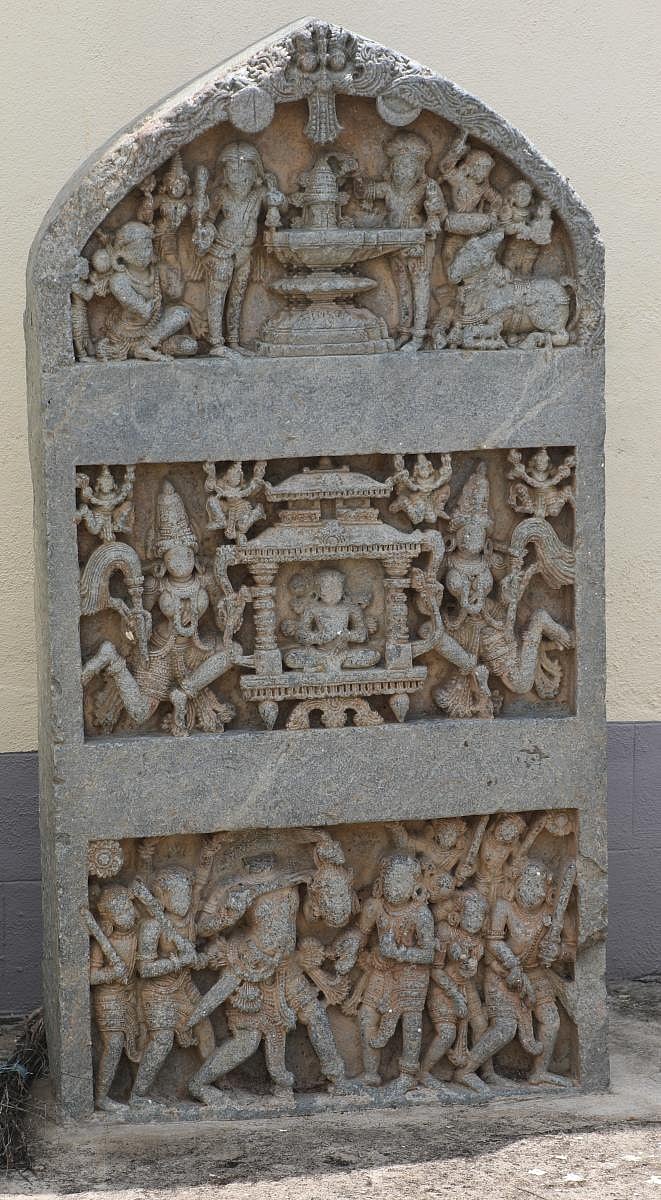
Just as we have security for the VIPs of today, such as the President’s Bodyguard or the National Security Guards protecting the prime minister, the kings of yore, too, had bodyguards... to protect them day and night, during peace or war.
Stories abound of such guards sacrificing themselves to guard their masters. The Hoysala kings, too, had their guards, Garudas. These Garudas had to take an oath to protect their kings even at the cost of their lives.
As they pledged their lives to protect the king, they alone enjoyed certain privileges. This included wearing the king’s emblem, entering the king’s chamber without having to seek permission etc.
The Garudas took oath to protect the king under whom they served. It was not that they took oath to protect the complete lineage of the king. Thus, once the reigning king dies, as far as I know, they have no duty to the next king.
Hoysala King Veera Ballala II also had his component of such Garudas protecting him. The leader of the Garudas was a person called Kuvara Laksma, who was in charge of a thousand Garuda soldiers.
When the king passed away in 1220, these thousand, headed by Kuvara Laksma, sacrificed themselves as a mark of their loyalty to the king.
It is said that each one of them cut their throats and severed their heads using their battle sword. To commemorate this event, a stone pillar was erected in the capital Halebidu, in Hoysaleshwara Temple.
The stone pillar has images of bodies without heads and soldiers during self-sacrifice.
That event is confirmed and commemorated on a hero stone, that was erected in memory of the proud Garuda leader Kuvara Laksma.
Here, we see the hero, the bodyguard of Hoysala King Veera Ballala II, cutting his throat and holding his head in his hand. The onlookers, his fellow Garudas and his wife, are seen in the lowest panel.
In the middle panel, we see him ascend towards the heavenly abodes.
In the topmost panel, we see him worshipping Shiva, guided by his two gurus.
That his fame would endure till the end of the world is testified by the sun and the moon. Such was the respect carried by the heroes of yore.
Derivative
Kalika Purana is one of the 18 upapuranas or minor puranas.
The original text was composed in Assam. This purana deals extensively with tantric worship. The original text, it is said, was composed by sage Markendeya. In departure from the normal practice, the texts start abruptly and end just as abruptly. It deals extensively about how Vishnu brought a grieving Shiva, a mendicant — after Sati killed herself in the sacrificial fire — back to the life of a grihasta or householder.
Towards the end, in the Rudhiradhyaya section, for well over 15 chapters, the text discusses various forms of sacrifices, including animal and human sacrifices.
The human sacrifice is divided into two areas — bali and self-sacrifice. It may be performed to please the goddess, but only with the consent of the person before a war or in cases of imminent danger.
While discussing self-sacrifice or Navaganda, the text specifies who is qualified to perform this act, and when.
As a guardian of the king’s life, a Garuda — the royal bodyguard of a Hoysala King — would be fit and sound as admissible by the purana.